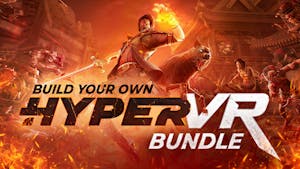The overall aesthetic of IsoMetro™ is a nod to city builder games from decades ago. Building on the base mechanics introduced by those original pioneers, IsoMetro™ leverages the vastly superior processing capabilities of today's "low end" hardware, to power a surprisingly nuanced and authentic economic simulation. Despite the nostalgic 90's visual aesthetic, it's not as simple as "big city, big buildings" -- economic effects are specific to every individual tile, encouraging you to think carefully about transit options and zoning policy if you want to see dense, vibrant city centers take shape.
Playing as the government, you can use your treasury funds to build public infrastructure such as utility facilities, transit networks, and civic service buildings. Meanwhile, buildings such as houses, shops, and factories will only be built in residential, commercial, and industrial zones respectively by the citizens themselves if you've met all their requirements. If your citizens can't get where they need to go, face utility shortages, are exposed to unacceptable levels of pollution, or are under-served in other ways, your infrastructure investments will go to waste. Meanwhile, a well-planned city will see healthy economic growth, and develop a positive cash flow from its tax base that can be used to invest in further expansion.
While building cities in IsoMetro™ is intended to be a comfortable, low-stress experience, the simulation also invites you to consider how the simplified concepts in the game world apply to the world we live in. Experiment with different transit options and zoning strategies to determine which approaches work better than others. Are roads and parking lots the way to go? Can you get away with not building even a single tile of road at all? Is a dense city core more profitable or is it better to have a metro area that sprawls far and wide?
IsoMetro™ brings you a balanced experience -- it can be thought-provoking if you choose to look closely at how your city works, but is also meant to be a satisfying and relaxing experience if you just want to watch your city evolve while you zone out to the varied music styles comprising the high-quality, 90-minute soundtrack.
On Friday this week, were going to launch IsoMetro because its finally in a state that we consider presentable. Our plan is to continue gradually improving the game after launch (refining the simulation engine, increasing the variety of buildings, adding new modes), so to take inspiration from a particular game that has its own facts released every Friday, well be releasing update news on Metro Mondays when there is something interesting to report on. In this first edition, well detail some recent improvements that you may not be aware of if the last time youve played the game was a few months ago (or never).
On the asset front, the Blender artists have been hard at work creating a slew of buildings that far exceed the detail level and variety of the Free Edition content. At time of writing, there are 16 residential buildings, 13 commercial buildings, 7 industrial buildings, 5 public service buildings, 8 utility buildings, and 5 vehicle models. These residential, commercial, and industrial buildings also economically interact across 12 distinct economic markets instead of just 3 (the Free Edition simply has the workforce, production, and shopping market types).
As far as code, along with plenty of small stability and usability improvements, weve rolled out vehicle visuals, so if youve got a road with some traffic, youll now see cars, trucks, and/or buses driving along it according to the traffic volume.
Speaking of trucks, markets are classified as either passenger or freight traffic now, and have different pathfinding rules, so you will no longer see industries shipping their goods to retail stores by bus.
Speaking of paths, the tools for visually inspecting tiles have been expanded so you can now take a look at exactly what paths your citizens are taking through a particular tile, with color-coded routes by the type of transportation theyre using.
Speaking of types of transportation, you can now construct underground subways, which unlike buses arent limited to the capacity of your roads, and can move citizens longer distances in the same amount of time.
Speaking of buses, the building placement tool now automatically orients buildings such as bus stops in a sensible direction, so if you want to build a bus stop next to a road, you dont need to manually rotate it anymore.
Speaking of building things next to roads, the game engine can now pick between car-dependent and car-free versions of buildings, so youll see driveways connecting houses to roads, and meanwhile if you remove a cherished bus or subway stop from a walkable neighborhood, youll notice existing buildings in the area scramble to demolish their gardens and common areas to make way for parking lots if driving is now their only viable option.
Finally, speaking of the very act of speaking of things, there is a context-aware tutorial which will explain basic mechanics in stages to help you get started more easily.
Overall, we hope that with this launch the game is enjoyable. Showing IsoMetro at conventions has already taught us some lessons and helped shape the game as it is today, so we look forward to integrating what we learn from feedback by initial Steam players into what we already have planned for further updates.
Minimum Setup
- OS: Ubuntu 18.04 LTS
- Processor: Intel i3 2100Memory: 2048 MB RAM
- Memory: 2048 MB RAM
- Graphics: Software Rendering
- Storage: 200 MB available spaceAdditional Notes: Disk space requirement will increase with new content.
Recommended Setup
- OS: Ubuntu 24.04 LTS
- Processor: AMD Ryzen 1200Memory: 8192 MB RAM
- Graphics: Integrated Graphics
- Storage: 1000 MB available space
[ 6487 ]
[ 2143 ]
[ 1910 ]

































